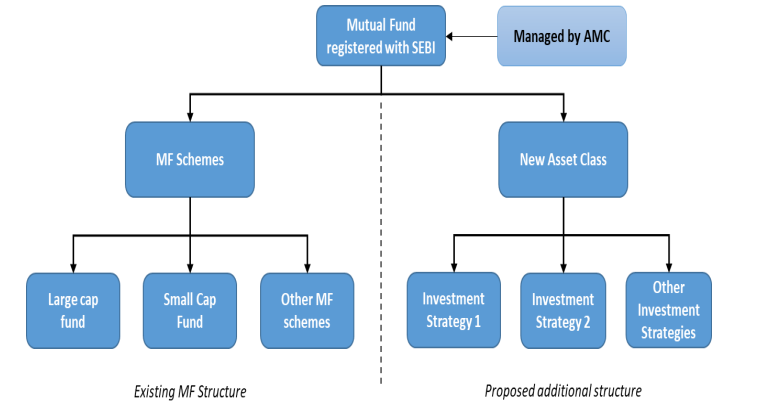
What’s the ‘new asset class’ that SEBI just proposed?
I recently read a Mint article discussing why people fall for unregulated schemes carrying great risk. The story cites the quote – “There is nothing as disturbing to one’s well-being and judgement as to see a friend get rich. Unless it is to see a non-friend get richer,” from the book ‘Manias, Panics and Crashes’ by Robert Z. Aliber and Charles Kindleberger.
When you see friends making a lot of money with higher-risk investments, it’s hard to resist. Even though you know it’s a high-risk product that might not suit you, the fear of missing out can be strong. Needless to say, not all high-risk products lead to outstanding returns all the time.
Despite the risks, the allure of high-risk, high-return products never fades. In India, regulated high-risk products aren’t accessible to retail investors. The regulator felt that the absence of such an investment product is making investors opt for unregistered and unauthorized investment schemes and entities. While the risk of the investment product is one concern, transacting with unregulated entities adds another layer of risk that could lead to bigger financial losses.
To address this issue, SEBI has come up with a consultation paper on July 16, 2024, proposing a new product category positioned between Mutual Funds (MFs) and Portfolio Management Services (PMS).
New asset class/product category
This “new asset class” as termed in the said paper, offers more flexibility and higher risk capability compared to traditional mutual funds.
They may come with a minimum investment size of Rs 10 lakh. This means an investor must invest a minimum of Rs 10 lakh, across one or more investment strategies, offered by a seller.
This threshold is designed to keep away small retail investors who may not have a higher risk appetite.
However, it allows the slightly affluent class to access high-risk category products. As per the consultation paper, investors with investible funds between Rs 10 lakh – Rs 50 lakh is the segment that is currently being drawn towards unauthorized and unregistered portfolio management service providers.
Who will offer this product? The existing mutual funds or asset management companies that meet certain criteria are allowed to launch this ‘new asset class.’ Alternatively, AMCs who appoint the chief investment officer (CIO) and a fund manager with specific fund management experience (10 years and 7 years, respectively) will also be eligible.
Proposed structure
So, what will the structure of this new asset class or product category be? Just like mutual funds come in a pooled fund structure (where money from individual investors is combined for investment purposes), the new asset class is also proposed to follow the same form. To avoid confusion, everything about the new asset class will have a different nomenclature compared to mutual funds. For example, instead of schemes (like large-cap, mid-cap, or small-cap) that mutual funds offer, the new asset class will offer ‘investment strategies.’

Source: Sebi consultation paper
Examples of these investment strategies include Long-short Equity Funds and Inverse ETF/Funds, as explained in the paper-
- Long-short Equity Fund: This fund seeks to deliver returns by taking long and short positions in equity and equity-related instruments. For example, the fund may be bullish on the automobile sector and bearish on the IT sector and may invest in both by going long on the automobile sector and short on the IT sector.
- Inverse ETF/Fund: This fund seeks to generate returns that are negatively correlated to the returns of the underlying index.
Current mutual fund regulations do not allow fund houses to use the above investment strategies because they are considered high-risk. This is the kind of flexibility the new asset class offers compared to mutual funds.
Of course, since this new product will be made available to a large section of investors, it is not completely without any strings. There are specific single stock or derivative exposure limits proposed by the regulator. These strategies can take exposure to derivatives to a greater extent but cannot borrow to make investments, unlike other sophisticated investment products.
Similar to Mutual Fund schemes, the investment strategies under the new asset class shall also be categorized under a risk-o-meter. However, it will come with a different depiction and nomenclature than that of Mutual Fund schemes. For example – A risk band as shown below.

Source: Sebi consultation paper
Redemptions and Listing
If you want to redeem your open-ended mutual fund units, you can do so online at any time of the day and week. Of course, the money gets credited after a day or two, depending on the settlement of funds. Anytime redemption and high liquidity are the key features of mutual funds in India.
For the ‘Investment Strategies’ under the new asset class, the product sellers can decide the redemption frequency based on the investment strategy. It can be daily, weekly, fortnightly, monthly, quarterly, annually, or fixed maturity. Fixed maturity refers to close-ended funds in which you can redeem units only at the time of maturity. Some managers prefer having it close-ended to lower volatility and to let the compounding work better, which could be a hindrance with frequent inflows and outflows.
However, to provide some liquidity access, it is also proposed that the units of the ‘investment strategies’ may also be listed on the recognized stock exchanges, particularly for units of investment strategies with redemption frequency greater than a week.
Global Comparison
Is this new asset class that SEBI is proposing unique to India? Not entirely. The consultation paper drew some parallels to similar investing products abroad:
- Hedge Fund Lite/Liquid Alternatives in the US: These provide access to alternative investment strategies, including long/short equit, but with the liquidity of mutual funds. They have different minimum investment amounts but usually in the rage of USD 1,000 to USD 10,000.
- Inverse Funds in Australia: These are designed to profit from a decline in the value of an underlying benchmark or asset class (just as described above).
Overall, the new asset class looks good in design and is expected to open doors to more innovative products in India. We have to wait and see if it’s going to be implemented and how it evolves. More importantly, will it serve the purpose of discouraging investors from gravitating towards high-risk unregulated entities? By the way, I wonder why it is called a new asset class. Technically, it’s not. Until a name is finalized, let’s stick to calling it a ‘new product category’?
